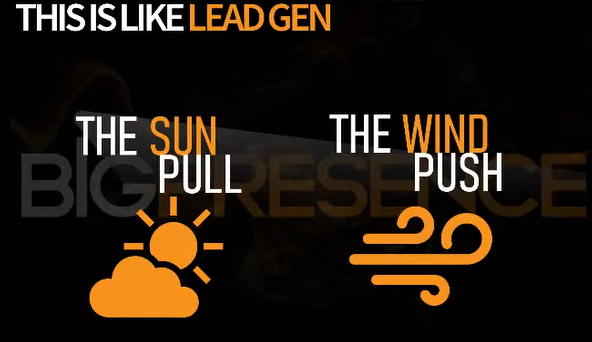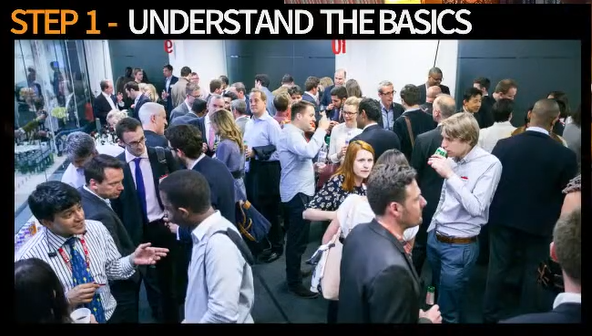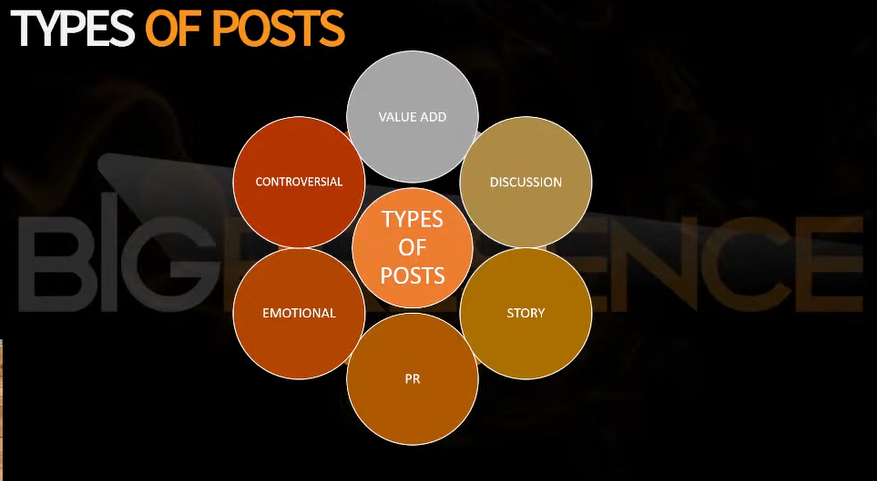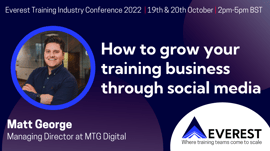Scaling your training business: how to generate consistent leads and enquiries
.png)
Jonathan Finch, Strategy Director at Big Presence, shared his expert insight into all things lead generation at this year's Everest Training Industry Conference. Here's a summary of what he taught us about generating consistent leads and enquiries:
Lead generation calculator
Jonathan notes that one of the most important things to start out with when it comes to lead generation is to work out how many enquiries and leads you need to get into your pipeline to start hitting your revenue targets.
To help with this, Big Presence offer their lead generation calculator as a free tool to start planning out how many leads you need to hit your targets.
Too few leads can cause obvious strain on a business, but have you considered the problem of having too many leads? It doesn't sound like the worst problem to have, but it can potentially create unforeseen issues. On this, Jonathan notes "you can actually have too many leads, and it can cause a bottleneck somewhere else".
If someone has taken the time to enquire about your product or service, you need to ensure you have capacity to give them a great customer/user experience. If you don't yet have the capacity to take on too many new clients at once, you may be spending too much time (and money) on big campaigns instead of nurturing your leads and retaining existing customers.
Talking about Big Presence's lead gen calculator, Jonathan said "if you are trying to generate more leads, if you are trying to get more business in, or if you're trying to scale ultimately, it would be a really good tool for you to take".
You can download Big Presence's lead generation calculator here!

Push and pull lead generation
The keys to a successful long term strategy
Jonathan uses the "sun and the wind" fable to explain the basics of push and pull lead generation.
You may have heard it before. In short:
The sun and the wind were having a bit of an argument about who is the stronger of the two, and they couldn't come to an agreement. Before long, they spotted someone walking down the street wearing a coat.
They challenged each other that the one who succeeded in removing the coat from the person's back was the strongest.
The wind goes first - blowing huge gusts of wind. The person below starts to zip their coat up even more. The wind blows harder again - the person clutches their coat tight and starts walking faster to get home. The wind failed.
Then the sun tries - it gently warms the air and the person below quickly relaxes and loosens their coat. The sun beams even warmer and the person takes off their jacket.
In this analogy - the sun is "pull" lead generation, and the wind is "push".
"Pull" tactics are things like creating consistent, quality content - useful and helpful information that will "warm" potential leads up to getting in contact with you. "Push" tactics are things like prospecting and creating outreach campaigns.
"What I'm not saying here is that you don't want aspects of the wind - we definitely need aspects of push tactics", Jonathan was quick to note. "Push tactics (or the wind) are useful - you do want to make sure that you are consistently reaching out to potential clients, for example if they've been looking at your content/resources. Some clients do need that push!"
Some example pull tactics include blog creation, website updates, and quality social media posts.
Examples of push tactics include creating outreach campaigns, following up from events, and using Linkedin automation.
Jonathan highlights Apple's branding as a great "pull" strategy. They're constantly creating quality content and imagery. "Their branding is solely focused on being better than their competitors and drawing people in", he says.

When to use push and pull lead generation tactics
Long term vs. short term strategy
Pull strategies tend to be longer-term, as they are more focused on building your brand. How your brand is presented, its core values, its people, and the products/services you offer. It affects how an individual perceives your brand.
Push strategies are often shorter-term and get faster results. It's ultimately reaching out about your products/services and engaging in conversation about how you can work together.
Tips for booking sales meetings
Jonathan has a great tip for booking in sales meetings. Instead of inviting someone for a traditional sales demo-style meeting, ask them if they'd like to have a brew over Zoom - a "Zoom brew" - half an hour to find out more about their company and how you can both work together. Most people don't enjoy being sold to - so setting the scene to have a genuine conversation is way more inviting and informal.
How to generate leads on Linkedin
When you think of lead generation on Linkedin, you may think of those "push" (sometimes spammy) automated sales messages you can receive from time to time. However, Linkedin is also a powerful tool for putting "pull" strategies into practice.
Jonathan outlines his 5 top tips for using pull tactics on Linkedin:

Step 1 – understand the basics
Jonathan describes Linkedin as a "24/7, 365 networking event, and all you have to do to get there is log in – you're now in the room".
So, why is Linkedin similar to a networking event? "At a networking event, you’ve got all these people in little groups talking about different things - it’s the exact same as posts on Linkedin", Jonathan says. "The last thing you want to do is be the person in the corner watching the networking event going on", he adds. "You're going to need some talking points".
One of the best things to start with is to find posts you're interested in and join the conversation in the comments. Post something meaningful, or ask another question. Once you've started joining other people's conversations, you might start getting some ideas for your own posts!
Similar to an in-person networking event - not much business happens directly on the "trade floor" - or Linkedin feed. The main feed of public posts are about introductions, connections, and ultimately finding who you want to talk to, to then take to the one-on-one messaging function.
Step 2 – optimising your linkedin profile
Take a few minutes to look at your Linkedin profile. Starting with your profile photo - if you're looking to start conversations and generate leads on Linkedin, Jonathan recommends having a casual, friendly photo - nothing to serious or formal.
Another important part of your profile is the cover photo - this is a larger space and one of the things that people will see first on your profile. You can use this to add as much info as you'd like to about what you do and what you have to offer.
Your headline shouldn't just be your job title - it should explain what you do, and what value you can bring to potential leads.
It can be difficult to review your own profile, so Jonathan recommends sending your profile to someone - a friend or colleague - to review for feedback.
Step 3 – find your audience
Finding your audience isn't necessarily about outbound prospecting. It's about growing your network and having the right people in there.
It's important to have the right audience, as if you're spending time creating content and posts and you don't have the right people viewing them, you won't get the results you're looking for.
Jonathan recommends taking the last 3 deals your company secured - and taking note of what job titles in what industry did the decision makers and key contacts come from. Use this information in your searches for people on Linkedin.
He recommends finding and sending connection requests to around 25 people a day to begin with. Don't just add anyone and everyone - you need to take time to curate your audience and only connect with the right people. Don't worry too much about adding a message to connect, unless it's very personalised - for example if you really enjoyed one of their posts.
Step 4 – pull (design some posts)
Now that we've taken time to understand the basics, refine our profile and grow our network, Jonathan has some top tips for creating content.
First we need to think about:
- Who – is the target audience?
- How – will we grab their attention?
- Why – will they want to speak to us?
Starting with target audience - think about the type of posts that will appeal to the job levels of your potential leads. "If I talked about tactics for getting leads, for example what to put in your ads, or what to write in your copy etc, Managing Directors probably wouldn't be that interested in that level of detail", Jonathan remarks. "What they will be interested in is that I can help them with lead generation strategies, At that level, they're looking at the bigger picture" he adds.
Posts with photos tend to tend to get a lot more engagement and attention. It can be a relevant image, or it can also be a photo of yourself. It adds a face to your brand - "I want people to associate my face with lead generation!", says Jonathan.
To further add engagement, make sure you encourage a conversation in the comments. Add a question to the end to engage people and start a discussion. "If someone gets involved, they are far more likely to remember you and your post" adds Jonathan.
Another idea is to create a post around solving a particular problem. Jonathan notes that it's important to add genuinely useful information to your posts, and not just a straight ad for your services. Something like "5 things you can do to…” centred around a common problem your potential leads may come across. Nothing too salesy - it needs to be genuinely useful for the reader.
By using Jonathan's tips, if someone is looking for help with a particular problem that your company solves, you will already be on their list. Jonathan says "a lot of enquiries we get say 'it was a post you did a few weeks ago that really hit home with me' – they may have been following me for 6 months and it was just one post a few weeks ago, and then from that they got in contact".
There are a few different types of posts that appear on Linkedin, including:
- Value add – add value to peoples network
- Discussion – asking questions
- Story – engaging and useful stories, more likely to recall what what you’ve said
- PR – we’ve moved office, we’ve signed a big partnership, etc
- Emotional – a lot more emotional posts now – used to be job searching and suits and ties – not anymore – definitely more than a business networking site now
- Controversial – some people build an entire brand being controversial!
Step 5 – engage with your audience
Finally, Jonathan's top tips for engaging with your audience include:
- Engage with your audience at a set time
- Consistency is key
- Don’t overcomplicate it
If you'd like to learn more about how Jonathan and his team can generate leads and enquiries for your business and fuel your growth, get in touch with Big Presence here!

Want to learn more about accessplanit?
If you're interested in learning more about using our powerful tools to grow your training business, why not book a demo with accessplanit today?
Forget about admin, automate your processes, and free up your time to focus on what matters to you and your training business.


%20(13).png?width=270&height=170&name=Content%20marketing%20for%20training%20companies%20(900%20%C3%97%20450px)%20(13).png)